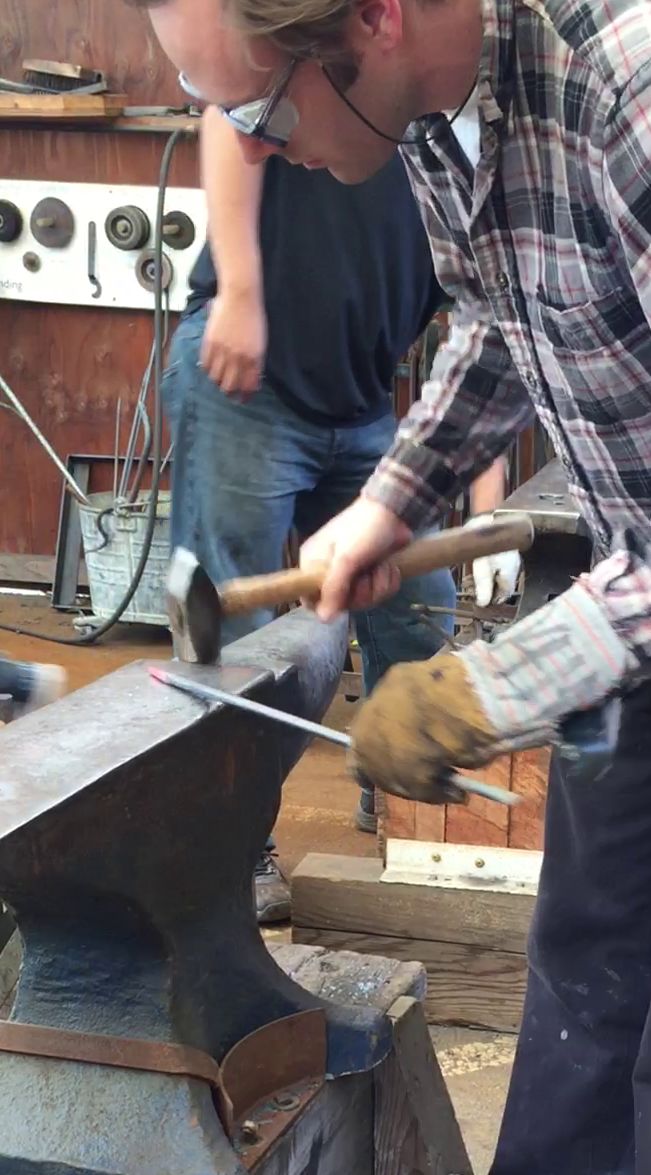| Hazard | Consequence |
|---|---|
| Working at heights or same level | Slip, trip, or fall |
| Tools/equipment/ machinery hazards | Injury |
| Exposed machinery moving parts, pinch points | Injury |
| Rotating equipment | Injury from entanglement of hair, clothing |
| Sharp edges | Cuts, scrapes |
| Fire or explosion | Burns, injury |
| Noise | Hearing loss |
| Vibration | Injury |
| Electricity | Shock, electrocution |
| Exposure to airborne dusts, fumes, mists, vapors | Adverse health effects |
| Low oxygen, confined space | Asphyxiation |
| Contact with hot, toxic, caustic chemical/product | Burns, irritation, other health effects |
|
Exposure to biological agent, bloodborne pathogen |
Adverse health effects, infection |
| Repetitive tasks, working in awkward position | Ergonomic issues |
| Lifting, pushing, or pulling | Strain |
| Poor lighting | Vision problems |
| Falling object | Injury |
| Radiation exposure | Health effects |
Job Hazard Analysis

What is a Job Hazard Analysis (JHA)?
A JHA is a method for identifying and evaluating hazards associated with tasks (steps) with a specific job or activity and eliminating or mitigating them prior to conducting work.
Why conduct a JHA?
A JHA can prevent work-related injuries or illnesses by eliminating or controlling identified hazards. It is a means to ensure that workers have the training, equipment, and supplies to do their jobs safely.
How do I conduct a JHA?
It is best to involve workers who do or will do the jobs being analyzed. Observe a worker perform the job or activity at the location where it is normally done.
A JHA involves doing the following:
-
Select the job/activity to be analyzed.
-
Break the job/activity down into a series of tasks.
- Identify potential hazards and consequences in each task.
- Determine preventive measures to overcome these hazards.
How do I identify jobs for analysis?
Ideally, all jobs/activities should have a JHA. However, jobs/activities with the following conditions should be considered a high priority for analysis.
- Jobs/activities with a history of injuries or near misses
- High risk jobs/activities with potential for fire, explosion, chemical release, catastrophic equipment failure
- Simple human error that could lead to serious injury
- New worker doing the job/activity
- Jobs/activities that have changed
- Infrequently performed jobs/activities
- Any job/activity under a safety "work permit” – confined space permit, hot work permit, etc.
How do I break the job into basic tasks?
Break the job/activity into key tasks. Do not be too general and not be too detailed. Use the Job Hazard Analysis template form and the Job Hazard Analysis (JHA) Instructions. Examples of JHAs developed at UW are given in the UW Job Hazard Analysis Library LINK. Take photos as needed to help describe the job tasks.
How do I identify potential hazards?
Identify potential hazards in each job task. For each hazard, ask the questions:
- What can go wrong?
- What are the consequences?
- How could it happen?
- What are other contributing factors?
- How likely is it that the hazard will occur?
How do I control the hazards?
Identify ways to eliminate or minimize the hazards in each task. The best method is to eliminate the hazard at the source. If not possible, control the hazard with engineering controls, safe work practices and personal protective equipment (PPE), or limit worker exposure using administrative controls.
What type of PPE is needed for a hazard that cannot be eliminated or minimized with controls?
- Safety glasses/goggles/face shield
- Gloves (specify type)
- Skin protection (lab coat/Tyvek suit)
- Respiratory protection
- Fall protection
- Hearing protection
- Hard hat
- Impact shielding
- Radiation shielding
What do I do when the JHA is completed?
- Ensure equipment and supplies are acquired to perform the job/activity according to the JHA.
- Train workers in the procedures, controls, and PPE according to the JHA.
- Review the JHA periodically and update it when the job/activity or equipment changes. Revise JHA as needed and retrain employees on the revised JHA.
- Consult EH&S to review JHAs as needed.
- Please send EH&S your completed JHA so we can add it to the UW JHA Library (coming soon) to help others do similar jobs safely.
Contact
Reference Files